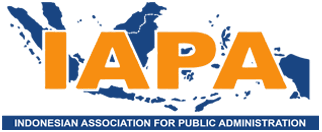Intervention on The Role of Procurement Service Unit
DOI:
https://doi.org/10.21776/ub.jpas.2018.003.02.8Keywords:
Procurement Service Unit, e-procurement, interventionAbstract
The purpose of this paper is to know more about the role of Procurement Service Unit in public procurement process in Indonesia and how government possibly intervene their decision because of their position as part of the government even though they should play a neutral position in the process. The establishment of this Procurement Services Unit actually is intended to be a mediator connecting users (government) with agents (providers/ suppliers). This research applied a qualitative content analysis approach. Data were collected through observation of secondary documents in January 2018. The research was conducted in Regional Office of Environmental Health and Disease Control Surabaya. The results show that the role of Procurement Service Unit needed to be expanded, not only just choosing the bidding winner but also take more control on procurement process. However, this unit already played the neutral position even though they were attached to the institution within their interventions, because of the introduction of e-procurement in Indonesia. But still, it can be argued because it is still need some approval from the actors itself, including the Procurement Service Unit, User, and the providers.
References
Azhari. (2011). Politik dan Birokrasi di Negra Bagian Sabah Malaysia (Studi Kasus Intervensi Pejabat Politik Terhadap Pejabat Birokrasi). Jurnal Hukum Dan Pembangunan, Vol. 41, No. 4, pp.594-622.
Brierly, J. L. (1963). The Law of Nations: An Introduction to the International Law of Peace. Gloucestershire: Clarendon Press.
Ferris, J. M., & Graddy, E. A. (1998). A Contractual Framework for New Public Management Theory. International Public Management Journal, Vol. 1(2), pp.225–240.
Gordon Murray, J. (2009). Improving The Validity of Public Procurement Research. International Journal of Public Sector Management, Vol. 22(2), pp. 91–103.
Hanna, R., Bishop, S., Nadel, S., Scheffler, G., & Durlacher, K. (2011). The Effectiveness of Anti-Corruption Policy: What Has Worked, What Hasn’t, and What We Don’t Know–A Systematic Review, Technical Report. London: EPPI-Centre, Social Science Research Unit, Institute of Education, University of London.
Jensen, M. C., & Meckling, W. H. (1976). Theory Of The Firm: Managerial Behavior, Agency Costs and Ownership Structure. Journal of Financial Economics, Vol. 3(4), 305–360.
Krippendorff, K. (2004). Content Analysis: An Introduction to Its Methodology (2nd ed., Vol. 79). California: Sage Publications, Inc.
Martini, R. (2010). Politisasi Birokrasi di Indonesia. POLITIKA, Jurnal Ilmu Politik (JIP), Vol. 1(1), pp.67–74.
Oppenheim, L. (1952). International Law: A Treatise. London: Longmans.
Panduranga, V. (2016). Transparency in Public Procurement Through E-procurement in India. Journal of Internet Banking and Commerce, Vol. 21(3), pp.150–151.
Parry, C., & Grant, J. P. (1986). Parry and Grant's Encyclopaedic Dictionary of International Law. New York: Oceana Publication. Inc.
Sadono, M., Wijaya, A. F., Wanto, A. H., & Fujimoto, K. (2017). Efficiency of Public Procurement in Magelang City Government: A Comparative. Jurnal Ilmiah Administrasi Publik (JIAP), Vol. 3(3), 191–197.
Starke, J. G. (1978). An Introduction to International Law. London: Butterworths.
Walker, H., & Harland, C. (2008). Eâ€procurement in the United Nations: Influences, Issues and Impact. International Journal of Operations & Production Management, Vol. 28(9), pp.831–857.
Widmalm, S. (2016). After NPM, curb your enthusiasm Over the Principal Agent Theory. Statsvetenskaplig Tidskrift, Vol.118(1), pp.127–143.
World Bank Group. (2016). Benchmarking Public Procurement 2016: Assessing Public Procurement Systems in 77 Economies. Washington, DC: World Bank.
Downloads
Published
Issue
Section
License
Copyright Statement
Authors who publish with JPAS agree to the following terms:
(1). Authors retain copyright and grant the journal right of first publication with the work simultaneously licensed under a Creative Commons Attribution License that allows others to share the work with an acknowledgement of the work's authorship and initial publication in this journal.
(2). Authors are able to enter into separate, additional contractual arrangements for the non-exclusive distribution of the journal's published version of the work (e.g., post it to an institutional repository or publish it in a book), with an acknowledgement of its initial publication in this journal.
(3). Authors are permitted and encouraged to post their work online (e.g., in institutional repositories or on their website) prior to and during the submission process, as it can lead to productive exchanges, as well as earlier and greater citation of published work (See The Effect of Open Access).
Permissions and reuse
For authors
Authors may use their own articles for the following non-commercial purposes without asking our permission (and subject only to acknowledging first publication in JPAS and giving a full reference or web link, as appropriate).
(1). Posting a pdf of their own article on their own personal or institutional website, for which no charge for access is made.
(2). Making a reasonable number of copies for personal or non commercial professional use.
This includes the contributors own teaching purposes.
(1). Republishing part or all of the article in a book or other publication edited by the author (except for multiple contributions in the same book or publication, for which permission needs to be sought.
(2). Using individual figures or tables or extracts of text (up to 300 words) in other publications published by a third party.
(3). Using the article in a course pack or compilation (whether paper or electronic) in the authors institution. This does not apply if a commercial charge is made for the compilation or training programme.
For third parties
All articles published by JPAS are published by default as open access.















